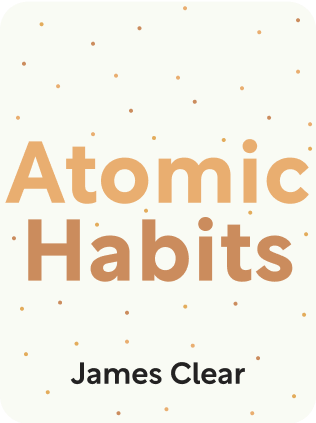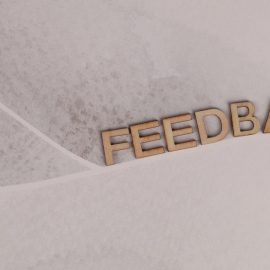

This article is an excerpt from the Shortform book guide to "Atomic Habits" by James Clear. Shortform has the world's best summaries and analyses of books you should be reading.
Like this article? Sign up for a free trial here .
What is the most important factor in building habits that stick? What can you do to persevere with a new behavior even when you are not motivated to do it?
According to James Clear, the author of Atomic Habits, the key to building habits that stick is twofold. First, be prepared to push through boredom and lack of motivation. Second, make the new habits more attractive and stimulating
Read on for tips on building habits that stick.
Building Habits That Stick
When it comes to building habits, motivation will not keep you going for long. Losing motivation is one of the biggest killers of habit formation. You lose motivation for several reasons, including choosing the wrong habits to start, not seeing progress fast enough, and failing to allow small changes to lead to others. However, one of the biggest killers of motivation is boredom.
To really succeed at building habits that stick, you must accept that boredom is inevitable. You must also acknowledge that feeling bored doesn’t mean the behavior is no longer valid.
How to Combat Boredom
Learning how to stay motivated means building habits that draw you in, rather than repel you. One of the best-known strategies for keeping behaviors interesting is working at a level of just manageable difficulty.
Your brain loves a challenge, but this love is fickle. If the challenge is not hard enough, you will lose interest. If the challenge is too hard, you will be unsuccessful in your behavior attempts and shy away from trying.
- Playing tennis against a 5-year-old will be too easy and lead to boredom.
- Playing tennis against Serena Williams will be way too hard and certainly lead to failure. (If not, you may have a Grand Slam championship in your future!)
- Either extreme will not help you engage with the activity or behavior.
The perfect degree of challenge for the brain is when you perform at a level that lives on the edge of your current abilities. This idea is referred to as the Goldilocks Rule, which states that degrees of difficulty must be just right to attain peak motivation.
How to Make the Right Behaviors Attractive
There are many different ways to address the underlying motivations of behavior, and your current methods may not be the best ones. The habits you have now are merely the behaviors the brain latched onto because of dopamine stimulation when rewards were experienced. To make behaviors more attractive and create new cravings, you can manipulate your thoughts and actions.
Supernormal Stimuli and Temptation Bundling
The more attractive and stimulating an experience, the more you will crave it. Unfortunately, building healthy habits (like exercising or eating more vegetables) don’t trigger strong cravings. The solution to this is to bundle the new habit with something you already want. This is called temptation bundling.
Temptation bundling creates a supernormal stimuli—a heightened version of reality that elicits stronger-than-normal responses.
- For example, an engineer loved binge-watching Netflix but also knew he should get more exercise. He used his knowledge to manipulate the functions of a stationary bike and the Netflix app. In order to watch Netflix, he had to ride the bike and keep a certain pace. If the pace decreased, the streaming stopped.
- By creating a connection between his craving to watch Netflix with his desire to exercise more, he made the act of exercising more attractive.
Temptation bundling can also be used with habit stacking. The formula is as follows: “After X [current habit], I will do Y [new habit]. After I do Y, I get to do Z [craved habit].”
- You’ve already stacked your need to exercise more on top of your current habit of eating lunch. But you also want to play video games. Your formula changes from: “After I finish lunch, I will walk around the block for 20 minutes” to “After I finish lunch, I will walk around the block for 20 minutes. After I walk around the block for 20 minutes, I get to play video games for 30 minutes.”
- If playing video games becomes the reward for walking, you’ve created a supernormal stimulus by making exercise more rewarding. You’ll begin to crave the walk so you can claim your reward afterward.
If the habit you stacked previously is something you’re passionate about, you can bundle another needed habit in between the two previous habits.
- You were successful in starting the habit of drawing more because you stacked it on top of washing dishes, but you also have bills to pay. Your formula changes from, “After I wash the dishes, I will draw for an hour” to “After I wash the dishes, I will pay the bills. After I pay the bills, I get to draw for an hour.”
Through temptation bundling, you create a heightened version of your desired habit to elicit a stronger desire. Over time, you will look forward to performing the needed habit because it means you get to do the desired activity next.
Signal Switching
When you experience positive feelings about something or someone, that thing or person becomes more attractive. Since cravings are nothing more than a signal to change part of your physical or emotional state, you can switch the signal by connecting behaviors to positive feelings. If behaviors create positive feelings, they become more attractive.
1. A shift in paradigm is one way to generate more positive feelings. Think about your “to-do” list. The items on it likely feel like burdens, or things you have to do. Change the title of the list to “get-to-do” list, and the burden of performing these acts now feels like an opportunity and a privilege.
- “I have to pick up my child from school” becomes “I get to pick up my child from school.” This small shift helps you recognize your fortune in having the freedom to be there for your child in this way.
- “I have to shop for groceries” becomes “I get to shop for groceries.” This different way of thinking about it highlights your fortunate position in being able to afford groceries and having the time to shop.
2. Redefining habits to highlight their advantages, rather than disadvantages, also creates more positive feelings.
- Exercise is typically thought of as strenuous and exhausting, but you could also think of it as strengthening and enhancing. “I need to exercise” becomes “Time to build muscle and endurance.”
- Saving money is often experienced as a sacrifice, but you could experience it as an act of liberation. Living frugally now helps you live more comfortably in the future.
- Meditation can leave you feeling the opposite of calm if you struggle to keep your mind clear. Instead of feeling frustrated with the intruding thoughts, see them as an opportunity to continue practicing and improving your ability to focus.
- Nerves can cause anxiety and an increased heart rate, which can feel stifling and hinder your behavior. Rather than experiencing nerves negatively, experience them as excitement and boosting your adrenaline.
3. Motivational rituals can also become cues to trigger positive feelings.
- If you listen to the same song every time you are intimate with your partner, after a while, that song will elicit feelings of intimacy and trigger you to act.
- Using the same warm-up regimen before athletic competitions will put you in the right frame of mind to compete.
- If scratching your dog behind the ears calms you down, attach other behaviors to the act to help you create that sensation at other times. For instance, take two deep breaths and smile before you pet your dog. In the future, when you want to feel calm, you can take two deep breaths and smile to trigger the brain to respond with calming feelings.
Creating more positive feelings for your habits will not happen overnight. Determine which strategy will work best and stick to it. Small changes require time to fully engage with the mind and become automatic cravings for the appropriate actions.
Still, at some point, even if you are able to create variable rewards through just manageable difficulty, you will be faced with boredom. Understanding that this will occur, regardless of your efforts, will help you address it when it comes and keep you from falling into the traps automated habits can create.

———End of Preview———
Like what you just read? Read the rest of the world's best book summary and analysis of James Clear's "Atomic Habits" at Shortform .
Here's what you'll find in our full Atomic Habits summary :
- The 4 Stages of Habit Formation you can use to transform your life
- How more than half of your daily actions are automatic
- Why some habits stick and why others won't






